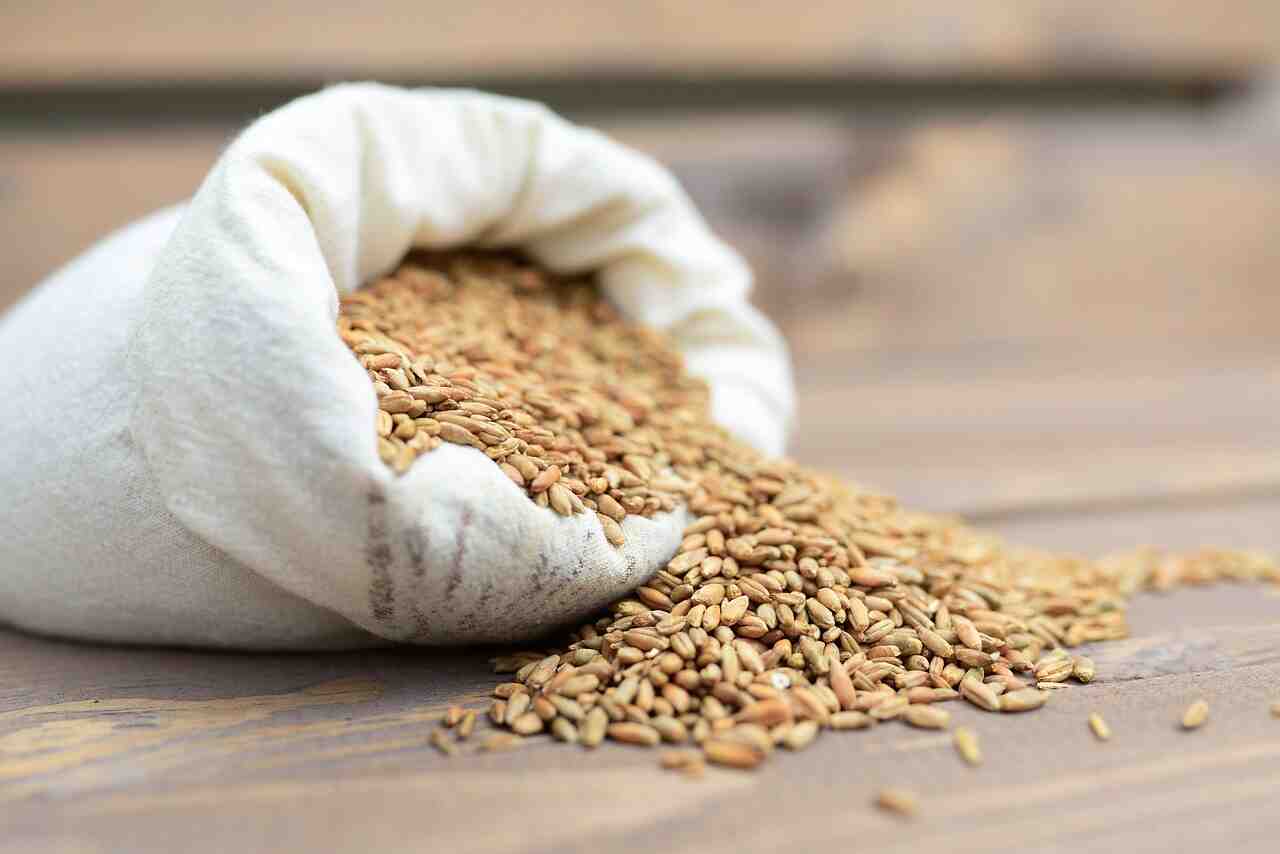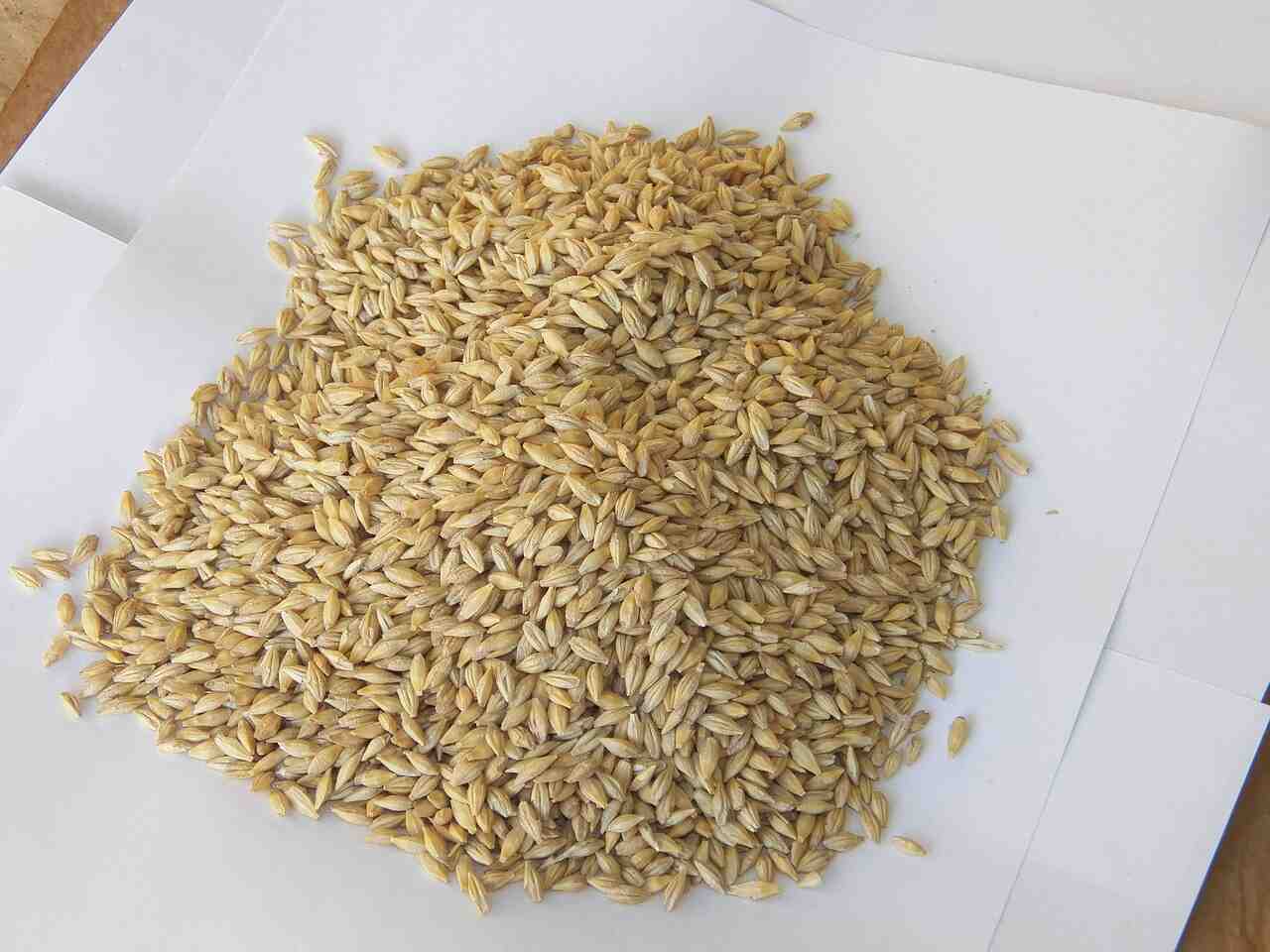Cereals are part of those precious and indispensable foods for the well-being of the body and, among these, barley and farro are the oldest and most versatile. Much loved by all those who prefer a balanced diet rich in fibre, they are often confused.
Despite being very similar, farro and barley have easily distinguishable characteristics and lend themselves to many tasty recipes, both in summer and in winter.

What is farro?
What is farro in English?
Farro is the Italian word for a type of grain called spelt.

Origins of farro
Farro is an ancient grain that belongs to the wheat family and is closely related to modern-day wheat. It has been cultivated for thousands of years and is known for its rich nutty flavor and nutritional profile. Farro was one of the earliest domesticated grains in human history, with evidence of its cultivation dating back to around 5000 BC.
Originally, it was widely cultivated in the Middle East and Europe, particularly in regions such as ancient Greece and Rome. It played a significant role in the diets of ancient civilizations and was considered a staple grain.
Farro’s nutritional properties
Farro contains:
- a high protein content (similar to barley).
- a higher fiber content than barley.
- vitamins A and B.
- mineral salts including phosphorus, potassium and magnesium
- a slightly different nutritional composition than modern wheat and people with sensitivities can tolerate farro better due to this different gluten structure. However, it’s still not gluten free though it’s definitely not recommended for celiac diets.
- properties that:
- lower bad cholesterol (LDL) levels
- reducing cardiovascular risk.
- preventing the onset of type 2 diabetes. For every 100 grams of farro, 340 kcal are absorbed.
- makes it easier to digest but is not recommended for those suffering from chronic colitis.
However, compared to durum and soft wheat, farro
Use of farro today
Today, farro is used in various culinary applications. It can be ground into flour to make bread, pasta, baked goods, and other wheat-based products. It is also used as an ingredient in soups, stews, salads, and side dishes. Farro’s distinct flavor and nutritional qualities make it a popular choice among individuals seeking alternative grains or following specific dietary preferences.
What is barley?

Origins of barley
Barley is a versatile cereal grain that has been cultivated for thousands of years. It belongs to the grass family and is one of the oldest domesticated grains in the world. Barley is believed to have originated in the Fertile Crescent region of the Middle East, which includes modern-day Iraq, Iran, and Syria.
The use of barley dates back to ancient civilizations such as the Sumerians, Babylonians, and Egyptians. It played a crucial role in their diets and was an important staple crop. Barley was highly valued for its ability to grow in diverse climates and its versatility in different culinary applications.
Barley has been used in various ways throughout history. It has been a significant component of bread, porridge, and fermented beverages, such as beer and barley wine. Its nutritional profile and abundance made it a reliable source of sustenance for many societies.
Barley’s nutritional properties
Barley is known for its high fiber content, vitamins, minerals, and antioxidants. It is also a good source of complex carbohydrates and offers several health benefits, including supporting digestive health, regulating blood sugar levels, and reducing the risk of heart disease.
Barley contains:
- 319 calories for every 100 grams
- a good protein load.
- a low fat intake.
- a high percentage of carbohydrates (70% of the nutritional content)
- fibre amounting to only 9% of the nutritional content. Thanks to its fibre content, it regulates constipation and stimulates a lazy bowel .
- minerals including phosphorus, iron, calcium, silicon, potassium, magnesium and zinc . For this reason it is considered a suitable food for the diets of those who play sports , because it allows the body to be remineralised.
- vitamins E and B.
- beta-glucan, a substance contained in this cereal which slows down the absorption of carbohydrates from other foods.
- properties that
- is used to lower blood sugar.
- acts as an anti-inflammatory, relieves gastric discomfort and relaxes the walls of the intestinal tract.
- has galactogenic capacity, therefore, useful to promote milk production thanks to the regulation of estrogen production. It’s recommended for women who are breastfeeding their baby.
- lowers bad cholesterol levels in the blood.
Use of barley today
In addition to being consumed as an ingredient in salads and soups, barley is also used to produce the famous drink, much loved especially for breakfast.
A cup of barley is an excellent coffee substitute without the contraindications of caffeine. In Korea, boricha tea is a very popular tea made from barley which is adored by adults and kids alike.
For the little ones or for those who want to start the day with a delicious drink, barley and cocoa is ideal to kickstart their day.
What are the differences between barley and farro
Barley and farro are two essential ingredients to follow a healthy and balanced diet. While farro and barley share several similarities, Farro is a specific type of wheat grain (which is also a cereal grain), whereas barley is a cereal grain. They have slightly different flavors and textures, which may influence their use in specific recipes.
Although they are both cereals, farro is particularly suitable for those suffering from intestinal disorders. Furthermore, if you are following a low-calorie diet, this cereal increases the sense of satiety. It has a high amount of fibre and absorbs liquids.
As for barley, this cereal has purifying and draining properties . Consuming it regularly helps to avoid fluid stagnation caused by a sedentary lifestyle and messy eating.
The real difference between barley and farro lies in the amount of fibre contained in the entire grain and not just in the cereal shell (which is why consuming hulled barley or farro is more demanding, but offers greater benefits to the body).
How to cook barley and farro
Soaking
However, depending on the pre-treatment the grains have undergone, they may need to be soaked.
- If the barley and farro are hulled, they will need to be soaked for 12 hours. After that, the chosen cereal can be cooked for at least an hour in plenty of salted water.
- If, on the other hand, it is a pearled product, then there will be no need to soak it and the cooking time will be reduced to 20-40 minutes.
Hulled vs pearled grains
The whole grains still have their hull and bran while pearled farro and barley, have had their hull and bran removed.
Boiling
The main cooking method for barley and farro is boiling.
Steaming
You can choose to steam barley and farro . For this type of cooking you can use the rice cooker or a steamer. It should be put one part of cereal and 2 parts of water. Cooking will take longer, but there won’t be a standard time: the process will end when the water has been completely absorbed.
Cooking like a risotto
Barley (orzo) and farro can be cooked using the same method used for risotto , adding broth or water a little at a time. This method then gives rise to the definition of a dish based on “orzotto” or “farrotto”.
Barley and farro recipes
Among the best recipes to prepare using barley and farro, the most popular combinations for these cereals are those with octopus , prawns and salmon. You can also substitute freely the risotto for barley or farro in risotto recipes like salmon and prawns risotto.
However, both barley and farro are also the main ingredients of excellent winter soups , thus successfully combining with vegetables such as carrots and tomatoes, as well as vegetables such as black cabbage or savoy cabbage. But even combining farro and barley with meat is a good option, perhaps served in a salad or in a ratatouille.
